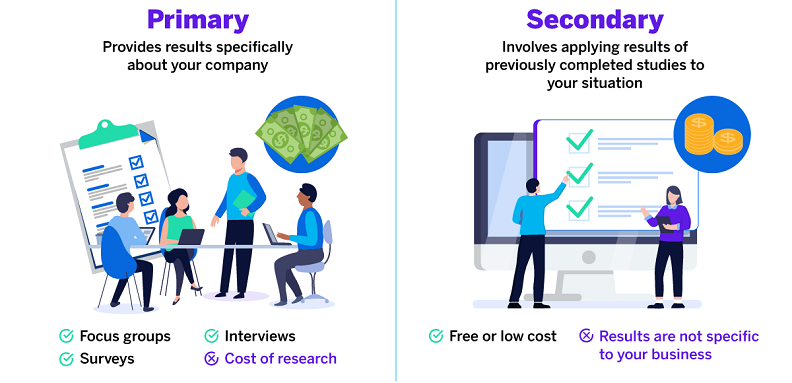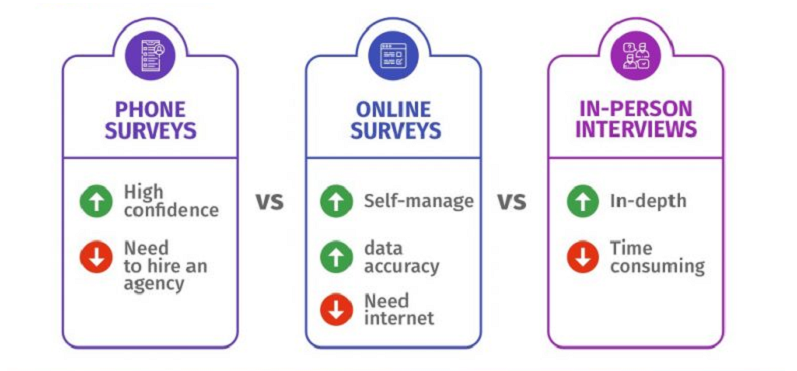
In an increasingly competitive business landscape, knowledge is power. But not just any knowledge – targeted, relevant, and actionable information that can steer your business in the right direction. Market research is the compass that helps navigate the tumultuous waters of the business world. Whether you are launching a startup, expanding an existing small business, or just fishing for new opportunities, market research is your first mate in making informed decisions.
Contents
- Introduction to Market Research
- Understanding Your Business Needs
- Types of Market Research Data
- Designing Market Research Tools
- Leveraging Technology for Market Research
- Analyzing and Interpreting Data
- References
Introduction to Market Research
Market research is an essential process that involves gathering, analyzing, and interpreting information about a market, including the products or services in that market, and the past, present, and potential customers for these offerings. It encompasses understanding the dynamics, customer preferences, and trends that can impact your business operations. In short, market research is the art and science of gathering and making sense of data to make informed business decisions.
The Importance of Market Research in Business Planning
Understanding why market research is crucial to business planning is the first step in appreciating its value. Market research helps in:
- Identifying Opportunities: By keeping a finger on the pulse of market trends and consumer preferences, market research helps identify new business opportunities.
- Minimizing Risks: When you understand the market, you can make decisions that reduce the uncertainties and risks in business operations.
- Understanding Customers: Knowing your customers’ needs and preferences allows you to tailor your products and services to meet their expectations.
- Staying Competitive: Keeping abreast of the competition’s strategies and performance helps you position your business favorably.
- Facilitating Growth: Data from market research supports the expansion and diversification plans of your business.
Introducing the Components of Effective Market Research
As we move forward, it’s important to know that market research is not a one-size-fits-all approach. It comprises several components, such as:
- Clearly defined objectives.
- Gathering primary and secondary data.
- Designing effective market research tools.
- Leveraging technology for data collection.
- Analyzing and interpreting data.
- Legal and ethical considerations.
- Learning from real-life examples and case studies.
Each component plays a pivotal role in ensuring that the data you gather is relevant, reliable, and actionable.

Understanding Your Business Needs
Embarking on market research without a clear understanding of what your business needs is like setting sail without a destination in mind. Before collecting data and analyzing trends, it is imperative to identify the objectives your business aims to achieve, define your target market, and recognize how market research can contribute to your business goals.
Identifying Your Business Objectives
Business objectives are the goals your company aims to achieve. They are critical because they serve as a guiding light that shapes your market research efforts. The type of data you collect, the questions you ask, and the analysis you perform are all driven by your objectives [1]. Here are steps to identify your business objectives:
- Define Your Mission: Know the core purpose of your business. What problem is it solving? What value is it offering?
- Set SMART Goals: Your goals should be Specific, Measurable, Achievable, Relevant, and Time-bound.
- Identify Key Performance Indicators (KPIs): Establish the metrics that will indicate whether or not you are making progress towards your goals.
Defining Your Target Market
Understanding your target market is essential to conduct market research that is both efficient and effective. Defining your target market involves identifying the specific group of people your products or services are intended for.
- Demographic Profile: Consider age, gender, education level, and other demographic factors.
- Geographic Location: Identify the areas where your potential customers are located.
- Psychographic Characteristics: Understand your target market’s lifestyle, values, interests, and attitudes.
- Buying Habits: Analyze how and when your target market makes purchases.
Now that you know who your target market is, you can tailor your market research efforts to gather relevant information about this audience.
Recognizing the Role of Market Research in Achieving Business Goals
Market research is not an end in itself, but a means to an end – achieving your business goals. Recognizing this can help you streamline your market research efforts for maximum impact [2].
- Informing Decision-Making: Market research provides the data you need to make informed decisions, whether it’s entering a new market, launching a product, or revising marketing strategies.
- Monitoring Market Trends: Keep an eye on the market to identify new trends and adapt your products or services accordingly.
- Evaluating Competitors: Understand who your competitors are, what they are offering, and how you can gain a competitive edge.
- Understanding Customer Preferences: Know what your customers want, and ensure your offerings align with their preferences.

Types of Market Research Data
Like the currents in the sea, data too can be diverse and overwhelming. Knowing how to navigate through these currents is crucial.
Primary Data
Primary data refers to information collected directly from the source for the specific purpose of your research. Since it is tailor-made for your research questions and objectives, it is often considered more valuable and relevant.
Definition and Examples
Definition: Primary data is data collected firsthand by the researcher or organization for a specific research purpose or objective.
Examples include customer feedback surveys, interviews, focus groups, and observations.
Methods of Collecting Primary Data
Different methods can be employed to collect primary data. These methods are chosen based on the research objectives, budget, and target audience.
Surveys and Questionnaires
Surveys are a popular method for collecting large amounts of data quickly. They can be conducted online, over the phone, or in-person. Keep questions clear and concise, use a mix of open-ended and close-ended questions, and ensure anonymity to encourage honest feedback.
Interviews
Interviews involve a one-on-one conversation between the researcher and the respondent. They can be structured, unstructured, or semi-structured. Prepare a set of questions in advance but be flexible to explore interesting responses.
Focus Groups
Focus groups involve a small group of people discussing a particular topic or set of topics. It’s a great way to gather diverse perspectives. Choose a diverse group of participants, have a skilled moderator, and create a comfortable environment for discussion.
Observations
This involves observing and recording behavior or events as they occur naturally. Effective Observations: Be as unobtrusive as possible and use standardized criteria for recording observations.
Experiments
Experiments involve manipulating one or more variables to determine the effect on another variable. Key Considerations: Clearly define control and experimental groups, and ensure that the sample size is representative.
Secondary Data
Secondary data is information that has been collected by someone else for a different purpose. It is often a good starting point for research, as it can provide background information and context [3].
Definition and Examples
Definition: Secondary data is data that has been previously collected by someone else, not specifically for your current research purpose.
Examples include government statistics, market reports, and academic papers.
Sources of Secondary Data
There are numerous sources from which secondary data can be obtained. Let’s take a look at some common sources.
Government Publications
Government sources often provide a wealth of data, such as census data, economic indicators, and demographic information.
Trade Associations
These organizations often publish industry-specific data, reports, and statistics that can be valuable for market research.
Market Research Reports
Pre-made market research reports can provide insights into industry trends, market size, and competitive analysis.
Academic Journals
Research published in academic journals can provide in-depth insights into specific topics and often includes extensive data analysis.

Designing Market Research Tools
With a solid understanding of the types of market research data, the next crucial step is to design tools that will help you effectively gather this data. Think of these tools as your fishing nets and rods, meticulously designed to catch the data you need.
Surveys and Questionnaires
Surveys and questionnaires are among the most popular tools for collecting primary data. They can be administered online, over the phone, or in-person, and are effective in gathering large amounts of data relatively quickly [4].
Crafting Effective Questions
- Keep Questions Clear and Concise: Avoid jargon and ensure that questions are easily understandable.
- Use a Mix of Open-Ended and Closed-Ended Questions: While closed-ended questions provide quantitative data, open-ended questions offer qualitative insights.
- Avoid Leading Questions: Ensure that questions are neutral and do not lead respondents towards a particular answer.
Designing the Layout
- Start with Simple Questions: Begin the survey with less demanding questions to engage respondents.
- Logical Flow: Arrange questions in a logical order, grouping similar topics together.
- Use Skip Logic: This allows respondents to skip irrelevant questions based on their previous answers.
Testing and Refinement
- Pilot Test: Conduct a pilot test with a small group to identify any issues before administering the survey to a larger audience.
- Refine Based on Feedback: Make necessary adjustments based on the feedback received during the pilot test.
Interviews
Interviews involve direct communication between the researcher and respondents and can offer in-depth insights into specific topics.
Preparing for Interviews
- Set Clear Objectives: Know what you want to achieve from the interview.
- Develop a Guide: Create an interview guide with a list of questions or topics to be covered.
Conducting the Interview
- Building Rapport: Start by building a rapport with the interviewee.
- Active Listening: Listen actively and be open to follow-up questions based on the responses.
- Take Notes: Jot down key points during the interview or consider recording it with permission.
Focus Groups
Focus groups involve discussions among a small group of participants and are useful for gathering diverse perspectives on a topic.
Planning the Focus Group
- Define Objectives: Clearly define the objectives of the focus group.
- Select Participants: Choose a diverse group of participants that represent your target audience.
Moderating the Discussion
- Skilled Moderator: A skilled moderator can ensure that the discussion stays on track and that all participants have a chance to speak.
- Encourage Interaction: Foster an environment where participants feel comfortable sharing their opinions.
- Record the Session: With the participants’ consent, record the session for later analysis.
Observation Techniques
When behavior or patterns are more telling than words, observation techniques come in handy.
Structured vs. Unstructured Observation
- Structured Observation: Involves a systematic approach to recording specific behavior.
- Unstructured Observation: More open and flexible, allowing the observer to note anything deemed relevant.
Participant vs. Non-Participant Observation
- Participant Observation: The researcher takes part in the activities being observed.
- Non-Participant Observation: The researcher observes without participating in the activity.
Recording Observations
- Use Standardized Forms: Develop standardized forms to ensure consistency in the data recorded.
- Capture Context: Note the context in which the behavior or event is taking place as it may be crucial for analysis.
Leveraging Technology for Market Research
With a solid understanding of the types of market research data, the next crucial step is to design tools that will help you effectively gather this data. Think of these tools as your fishing nets and rods, meticulously designed to catch the data you need.
Surveys and Questionnaires
Surveys and questionnaires are among the most popular tools for collecting primary data. They can be administered online, over the phone, or in-person, and are effective in gathering large amounts of data relatively quickly [5].
Crafting Effective Questions
- Keep Questions Clear and Concise: Avoid jargon and ensure that questions are easily understandable.
- Use a Mix of Open-Ended and Closed-Ended Questions: While closed-ended questions provide quantitative data, open-ended questions offer qualitative insights.
- Avoid Leading Questions: Ensure that questions are neutral and do not lead respondents towards a particular answer.
Designing the Layout
- Start with Simple Questions: Begin the survey with less demanding questions to engage respondents.
- Logical Flow: Arrange questions in a logical order, grouping similar topics together.
- Use Skip Logic: This allows respondents to skip irrelevant questions based on their previous answers.
Testing and Refinement
- Pilot Test: Conduct a pilot test with a small group to identify any issues before administering the survey to a larger audience.
- Refine Based on Feedback: Make necessary adjustments based on the feedback received during the pilot test.
Interviews
Interviews involve direct communication between the researcher and respondents and can offer in-depth insights into specific topics.
Preparing for Interviews
- Set Clear Objectives: Know what you want to achieve from the interview.
- Develop a Guide: Create an interview guide with a list of questions or topics to be covered.
Conducting the Interview
- Building Rapport: Start by building a rapport with the interviewee.
- Active Listening: Listen actively and be open to follow-up questions based on the responses.
- Take Notes: Jot down key points during the interview or consider recording it with permission.
Focus Groups
Focus groups involve discussions among a small group of participants and are useful for gathering diverse perspectives on a topic.
Planning the Focus Group
- Define Objectives: Clearly define the objectives of the focus group.
- Select Participants: Choose a diverse group of participants that represent your target audience.
Moderating the Discussion
- Skilled Moderator: A skilled moderator can ensure that the discussion stays on track and that all participants have a chance to speak.
- Encourage Interaction: Foster an environment where participants feel comfortable sharing their opinions.
- Record the Session: With the participants’ consent, record the session for later analysis.
Observation Techniques
When behavior or patterns are more telling than words, observation techniques come in handy.
Structured vs. Unstructured Observation
- Structured Observation: Involves a systematic approach to recording specific behavior.
- Unstructured Observation: More open and flexible, allowing the observer to note anything deemed relevant.
Participant vs. Non-Participant Observation
- Participant Observation: The researcher takes part in the activities being observed.
- Non-Participant Observation: The researcher observes without participating in the activity.
Recording Observations
- Use Standardized Forms: Develop standardized forms to ensure consistency in the data recorded.
- Capture Context: Note the context in which the behavior or event is taking place as it may be crucial for analysis.
Analyzing and Interpreting Data
You’ve cast your nets far and wide, and now you are back ashore with a bounty of data. But this raw data is like uncut diamonds – it needs to be polished and analyzed to reveal its true value.
Data Cleaning and Preparation
Before diving into the analysis, it’s essential to clean and prepare your data. This involves ensuring that the data is accurate, consistent, and in a format that is suitable for analysis.
- Removing Duplicate Entries: Duplicate data can skew your results. Check for and remove any duplicate entries in your dataset.
- Handling Missing Data: Decide how to deal with missing data, whether it’s by ignoring it, imputing values, or using statistical methods to account for it.
- Standardizing Data Formats: Ensure that your data is in a consistent format, such as dates, currencies, and categorical variables.
Quantitative Analysis
Quantitative analysis deals with numerical data and involves statistical techniques to analyze trends, relationships, or differences among groups.
- Descriptive Statistics: This includes calculating the mean, median, mode, standard deviation, and other statistical measures that summarize your data.
- Inferential Statistics: Use inferential statistics to make predictions or inferences about a population based on your sample data.
- Visualization: Create charts, graphs, and plots to visually represent your data and make trends and patterns more discernible.
Qualitative Analysis
Qualitative analysis is concerned with non-numerical data, such as text, and involves identifying patterns or themes.
- Thematic Analysis: Read through the data, such as interview transcripts, and identify common themes or categories.
- Coding: Assign codes to segments of data that represent different themes or categories.
- Interpretation: Understand and interpret the underlying meanings or insights that the themes reveal.
Drawing Conclusions and Making Recommendations
After analyzing the data, the final step is to draw conclusions and make recommendations based on your findings.
- Relating Findings to Objectives: Evaluate how your findings relate to your initial research objectives and business goals.
- Identifying Key Insights: Highlight the most significant insights that your analysis has revealed.
- Making Informed Recommendations: Based on your analysis and insights, make recommendations for business decisions or strategies.
References
[1] An Introduction to Data Collection within Marketing Research.
[2] How to Do Market Research, Types, and Example
[3] How to Do Market Research: A Guide and Template
[4] Using Data in Marketing Research – Explained
[5] A Beginner’s Guide to Market Research Analysis
